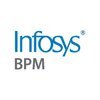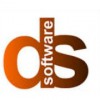Top 50 Spring Boot Interview Questions and Answers
Updated 9 Jul 2025

Asked in Symbo Insurance

Q. What is the SpringBootApplication annotation in Spring Boot?
SpringBootApplication is a combination of three annotations in Spring Boot.
SpringBootApplication is a meta-annotation that combines @Configuration, @EnableAutoConfiguration, and @ComponentScan annotations.
@Configuration annotation indicates that the ...read more

Asked in Capita

Spring Batch is a lightweight, comprehensive framework for batch processing in Java.
Spring Batch provides reusable functions for processing large volumes of data.
It supports reading, processing, and writing data in chunks.
It includes features like tr...read more

Asked in Infosys

Q. How would you create a Spring Boot application from scratch for web and database operations? Please provide the steps.
Creating a Spring Boot application for web and database operations
Create a new Spring Boot project using Spring Initializr
Add necessary dependencies for web and database operations in pom.xml
Create a database schema and configure database connection ...read more

Asked in Ernst & Young and 8 others

Q. What does the @SpringBootApplication annotation do?
@SpringBootApplication is a Spring Boot annotation that enables auto-configuration and component scanning.
Enables auto-configuration of the Spring application context
Enables component scanning for beans
Provides a convenient shortcut for @Configuratio...read more

Asked in C-Edge Technologies

Q. Explain the advantages of Spring Boot.
Spring Boot simplifies the development of Java applications by providing a set of tools and conventions for building production-ready applications quickly.
Provides a pre-configured environment for developing and deploying Java applications
Reduces the...read more
Asked in NewGen IT Solutions and Services

Q. Create a Spring Boot application with GET and POST methods.
Create a Spring Boot application with GET and POST methods
Create a new Spring Boot project using Spring Initializr
Define a controller class with methods for GET and POST requests
Use @GetMapping and @PostMapping annotations to map requests to methods
I...read more


Asked in Cognizant

Q. How do you connect two different databases from a Spring Boot application?
To connect 2 different databases from a Spring Boot application, you can use Spring Data JPA and configure multiple data sources.
Configure the data sources in the application.properties file
Create separate JPA repositories for each data source
Use @Qu...read more

Asked in TCS

Q. What are the Spring and Spring Boot frameworks?
Spring is a Java framework for building enterprise applications. Spring Boot is a tool that simplifies the setup and development of Spring applications.
Spring is a powerful Java framework used for building enterprise applications.
It provides comprehe...read more

Asked in Cognizant

Q. Explain Dependency Injection in Spring Boot.
Dependency Injection in Spring Boot is a design pattern that allows for better code management and testing by injecting dependencies.
Promotes loose coupling between components.
Facilitates easier unit testing by allowing mock dependencies.
Implemented ...read more

Asked in Infosys

Q. Describe how to create a Spring Boot controller from end to end, including the structure and implementation details.
Creating a Spring Boot controller involves defining endpoints, handling requests, and returning responses.
1. Set up a Spring Boot project using Spring Initializr or your IDE.
2. Add necessary dependencies in 'pom.xml' or 'build.gradle'. Example: 'spri...read more
Spring Boot Jobs



Asked in Dataquad

Q. How do you handle performance issues in Spring Boot?
Optimize Spring Boot performance using profiling, caching, and efficient database access strategies.
Use Spring Boot Actuator to monitor application performance metrics.
Implement caching with @Cacheable to reduce database load.
Optimize database querie...read more

Asked in Prospecta Software

Q. How do you create APIs using Spring Boot?
Learn how to create RESTful APIs using Spring Boot framework for Java applications.
Set up a Spring Boot project using Spring Initializr or your IDE.
Define a model class to represent the data structure, e.g., 'User'.
Create a repository interface for d...read more

Asked in Virtusa Consulting Services

Q. How can we achieve load balancing in Spring Boot?
Load balancing in Spring Boot can be achieved using various strategies and tools to distribute traffic across multiple instances.
Use Spring Cloud LoadBalancer for client-side load balancing.
Implement Ribbon for load balancing in microservices archite...read more

Asked in Cognizant

Q. what is Spring and Spring boot?
Spring is a framework for building Java applications, while Spring Boot is an extension that simplifies the setup and development process.
Spring is a comprehensive framework that provides infrastructure support for developing Java applications.
Spring...read more

Asked in HCL Group and 2 others

Q. What are the benefits of Spring Boot?
Spring Boot simplifies Java development with rapid setup, embedded servers, and production-ready features.
Rapid Development: Spring Boot reduces boilerplate code, allowing developers to focus on business logic. For example, using @SpringBootApplicati...read more

Asked in UST

Q. Write a Spring Boot REST controller.
A Spring Boot REST controller is used to handle incoming HTTP requests and return appropriate responses.
Create a new Java class annotated with @RestController
Define request mapping annotations like @GetMapping, @PostMapping, @PutMapping, @DeleteMappi...read more
Asked in VV TECH PRIVATE LIMITED

Q. Explain Spring Boot Microservice.
Spring Boot microservices are small, independent, loosely coupled services built using the Spring Boot framework.
Microservices are small, independent services that work together to form a larger application.
Spring Boot is a framework that simplifies ...read more

Asked in TCS

Q. What is Spring Boot validation?
Spring Boot validation is a feature that allows developers to validate input data in a Spring Boot application.
Spring Boot validation is used to ensure that the data entered by the user meets certain criteria.
It can be applied to request parameters, ...read more

Asked in ZeMoSo Technologies

Q. Develop a Spring Boot API for a given table.
Develop a Spring Boot API for a given table
Create a Spring Boot project with necessary dependencies
Define entity class representing the table
Create a repository interface extending JpaRepository
Implement service layer with business logic
Create REST c...read more

Asked in Nelito System

Q. Explain the Spring Boot framework workflow/architecture.
Spring Boot is a framework that simplifies the development of Java applications by providing pre-configured settings and tools.
Spring Boot eliminates the need for manual configuration by providing defaults for most settings.
It allows for easy creatio...read more

Asked in LogicMonitor

Q. How do you handle authentication in Spring Boot?
Authentication in Spring Boot is handled using Spring Security which provides various authentication mechanisms.
Use Spring Security to configure authentication in Spring Boot
Define a custom UserDetailsService to load user-specific data for authentica...read more

Asked in Ernst & Young

Q. How would you connect a Spring Boot project with a database?
Use Spring Data JPA to connect Spring Boot project with database.
Add database configuration in application.properties or application.yml file
Create entity classes annotated with @Entity and @Table
Create repository interfaces extending JpaRepository
Us...read more

Asked in Infosys

Q. When should you use Spring Boot versus Spring MVC?
Spring Boot is preferred for rapid development and microservices, while Spring MVC is used for traditional web applications.
Spring Boot is preferred for rapid development of microservices due to its convention over configuration approach.
Spring MVC i...read more

Asked in Infosys BPM

Q. What is the use of @Valid in Spring Boot?
@Valid is used in Spring Boot to validate Java objects, ensuring they meet specified constraints before processing.
@Valid is an annotation from the Java Bean Validation framework.
It is commonly used in Spring MVC controllers to validate request bodie...read more

Asked in IBM

Q. How do you deploy a Spring Boot application?
Spring Boot applications can be deployed using various methods such as embedded servers, Docker containers, and cloud platforms.
Deploying as a standalone JAR file using embedded servers like Tomcat or Jetty
Building a Docker image and running the appl...read more

Asked in Globant

Q. Have you done any customization in Spring Boot?
Yes, I have done customisation in spring-boot.
Implemented custom error handling by extending ResponseEntityExceptionHandler
Created custom annotations for validation
Configured custom logging using Logback

Asked in ZeMoSo Technologies

Q. Create a Spring Boot project and implement CRUD operations for a user table.
Implement CRUD operations for user table in a Spring Boot project.
Create a Spring Boot project using Spring Initializr
Define a User entity with necessary fields and annotations
Create a UserRepository interface extending JpaRepository
Implement methods...read more

Asked in Direction Software LLP

Q. How can you integrate Spring Data JPA with Spring Boot?
Integrating Spring Data JPA with Spring Boot allows for easy database operations in a Spring Boot application.
Add Spring Data JPA dependency in pom.xml
Create JPA entity classes annotated with @Entity
Create a repository interface extending JpaReposito...read more

Asked in Mphasis

Q. How would you create an API using Spring Boot?
Creating API using Spring Boot for software development.
Use @RestController annotation to define RESTful web services.
Define request mappings using @RequestMapping annotation.
Use @GetMapping, @PostMapping, @PutMapping, @DeleteMapping annotations for ...read more

Asked in Standard Chartered

Q. Spring Boot: What is an actuator?
Actuator is a Spring Boot module that provides endpoints for monitoring and managing the application.
Actuator exposes various endpoints for monitoring and managing the application
It provides health, metrics, info, and other endpoints
These endpoints c...read more

Top Interview Questions for Related Skills
Interview Experiences of Popular Companies










Interview Questions of Spring Boot Related Designations



Reviews
Interviews
Salaries
Users










